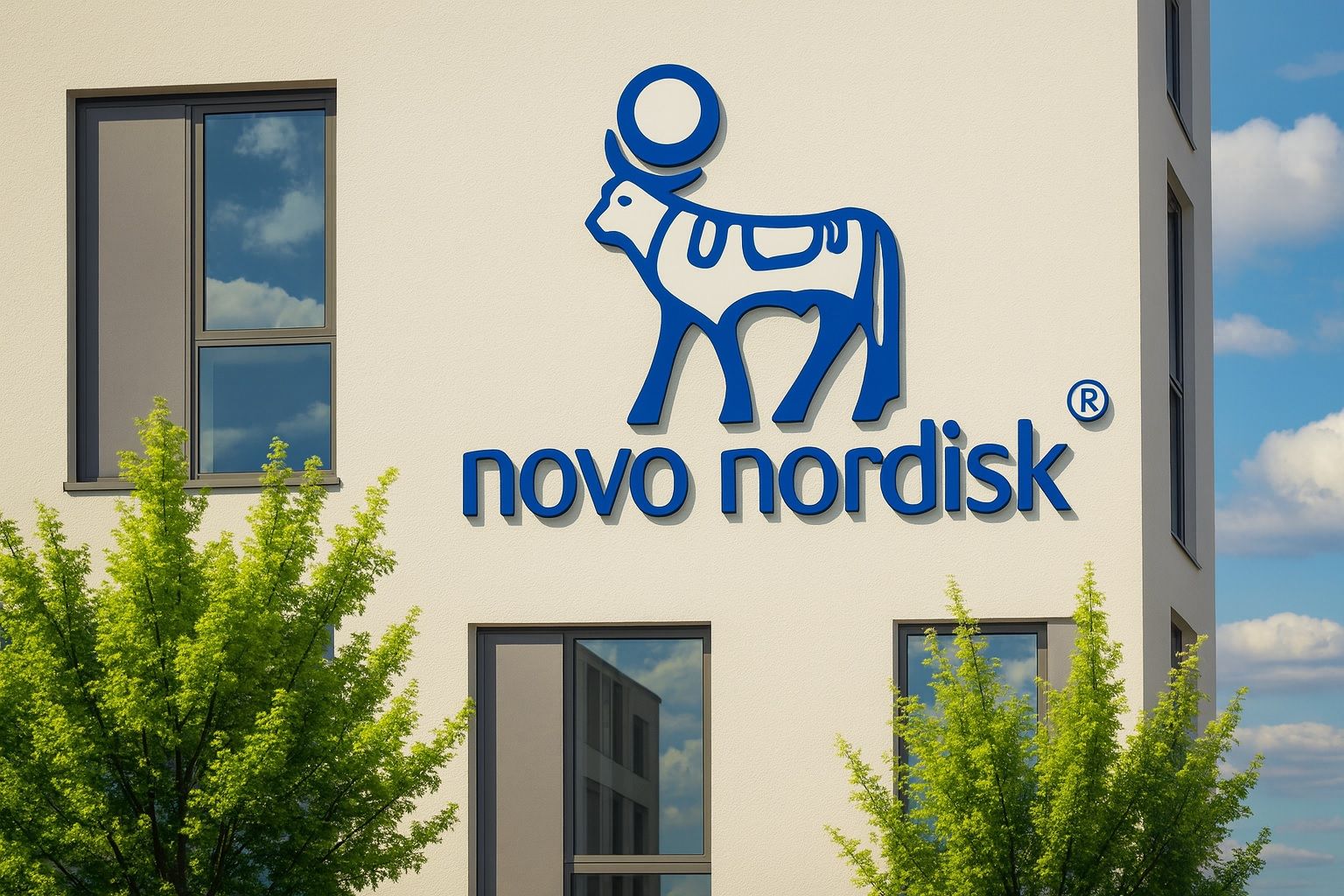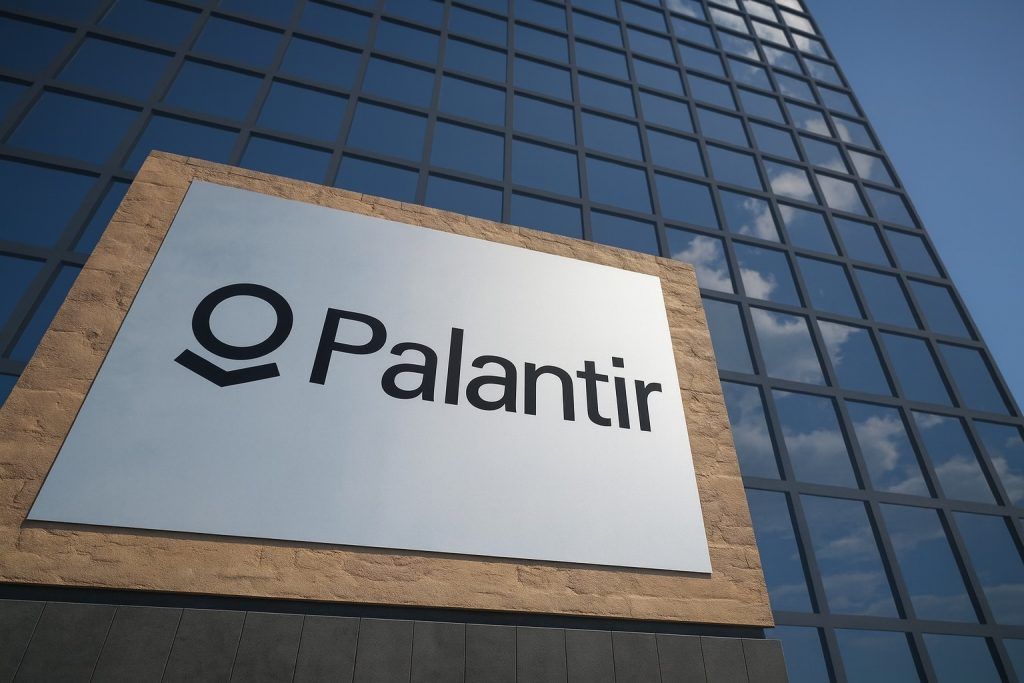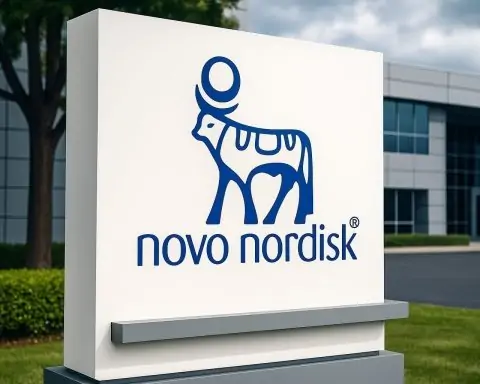- Deal Announced: Novo Nordisk (NYSE:NVO) will pay up to $2.1 billion to license Omeros Corporation’s (NASDAQ:OMER) experimental MASP-3 inhibitor zaltenibart (OMS906) for rare blood and kidney disorders [1] [2]. Omeros gets $340M upfront plus milestones/royalties (totaling up to $2.1B) [3].
- Drug Candidate: Zaltenibart is a monoclonal antibody that inhibits MASP-3, a key protein in the complement immune pathway. It showed positive Phase 2 results in paroxysmal nocturnal hemoglobinuria (PNH), with a good safety profile [4] [5]. Novo claims it may be “best-in-class” for PNH and related disorders [6].
- Omeros Pipeline: The deal lets Novo develop zaltenibart globally. Omeros will focus on its lead MASP-2 antibody narsoplimab (in FDA/EU review for transplant-associated TMA) and other pipeline assets [7] [8]. Omeros executives say the deal validates their research and funds further trials [9] [10].
- Market Reaction: Omeros stock surged ~65% on the news [11], while Novo’s shares were roughly flat (down ~1.5%) [12]. As of midday Oct 15, Novo’s Danish-listed share price was about 361.95 DKK (~$52) [13]. (TipRanks notes Omeros’s average analyst target is ~$5.40 [14].)
- Strategic Context: The deal is part of Novo’s push into rare diseases beyond obesity/diabetes. Just days earlier Novo agreed to buy Akero Therapeutics for $5.2B to tackle fatty-liver disease [15]. Under new CEO Maziar Doustdar, Novo has announced ~9,000 job cuts to streamline operations [16]. Doustdar has stressed a “tight focus” on metabolic and related diseases (obesity/diabetes/MAH-syndrome) rather than unrelated fields [17].
- Next Steps: The agreement should close by Q4 2025. Novo will then begin a global Phase 3 program for zaltenibart in PNH and may explore it in other complement-driven disorders (e.g. IgA nephropathy, C3 glomerulopathy) [18] [19].
Deal Details: Novo Licenses Omeros’s MASP-3 Inhibitor
On Oct. 15, Novo Nordisk and Seattle-based Omeros announced a definitive asset purchase and license agreement. Under the terms, Novo gains exclusive global rights to zaltenibart (OMS906) for all indications. Omeros will receive $340 million up front and near-term milestones, plus up to $2.1 billion total with development and sales milestones and tiered royalties [20]. Reuters reported Novo would pay “up to $2.1 billion” for the experimental drug [21]. The deal is structured as a licensing asset purchase, not a full acquisition, and is expected to close in Q4 2025 [22] [23].
Novo’s Chief Scientific Officer Martin Holst Lange described zaltenibart as having a “novel mode of action” with potential advantages over existing treatments [24]. Omeros CEO Gregory Demopulos said he expects Novo’s global reach to “unlock the potential” of zaltenibart [25]. The press release notes that Omeros keeps certain unrelated MASP-3 assets and will now concentrate on getting its lead MASP-2 antibody, narsoplimab, approved [26].
What Is Zaltenibart and How Does It Work?
Zaltenibart (OMS906) is a humanized monoclonal antibody that targets MASP-3, the most upstream activator of the complement system’s alternative pathway [27]. By inhibiting MASP-3, the drug aims to reduce uncontrolled complement activity without shutting down the entire immune defense. (Unlike C5 inhibitors, MASP-3 inhibition preserves the classical pathway and vaccine response [28].)
Omeros’s data show zaltenibart effectively lowers complement overactivity. In Phase 2 trials for PNH (a rare blood disorder where the immune system destroys red cells and platelets), patients saw “sustained clinically meaningful improvements” in hemoglobin and lower hemolysis rates [29]. Zaltenibart has demonstrated an acceptable safety profile and dosing convenience. In fact, Fierce Biotech noted it can be dosed every eight weeks – similar to Ultomiris – which could match the dosing schedules of current PNH drugs [30].
Importantly, Omeros highlights that za ltenibart showed “multiple potential advantages over other alternative pathway inhibitors” [31]. Those advantages include targeting the root of complement activation (MASP-3) and possibly reducing both intravascular and extravascular hemolysis simultaneously. If successful, zaltenibart could be positioned as a best-in-class complement therapy. As Lange stated, Novo sees an opportunity to “develop zaltenibart into a differentiated and potentially best-in-class treatment approach for a number of rare blood and kidney disorders.” [32]
Omeros Pipeline and Narsoplimab
Omeros is a clinical-stage biotech focusing on complement-mediated diseases. Along with MASP-3 (zaltenibart), its lead asset has been narsoplimab, an MASP-2 inhibitor under review in the U.S. and EU for stem-cell-transplant associated thrombotic microangiopathy (HSCT-TMA). Omeros has poured resources into narsoplimab – it even won an FDA priority review in 2023 – but was twice rebuffed, most recently in August 2025 [33].
The new deal relieves Omeros of the hefty burden of funding a global Phase 3 for PNH. (Earlier this year Omeros said it had to “temporarily” pause the planned Phase 3 in PNH to conserve capital [34].) Now Novo will pick up the PNH trials. In return, Omeros can redirect its own capital toward narsoplimab. As Demopulos noted, “With Novo Nordisk driving the success of zaltenibart, Omeros remains focused on securing approval and commercialization of narsoplimab” and advancing the rest of its pipeline [35].
Omeros’s pipeline also includes other novel programs (e.g. a PDE7 inhibitor for cocaine use disorder) [36]. But all eyes will be on how quickly Novo can kick-start Phase 3 for zaltenibart in PNH, and on whether Omeros can finally get narsoplimab to market. The partnership essentially monetizes Omeros’s MASP-3 work (already validated in PNH) while preserving rights to its MASP-2 and small-molecule MASP-3 efforts [37].
Market Reaction and Stock Outlook
Investors reacted strongly. Omeros’s shares spiked sharply: by mid-morning Oct 15 its stock was up roughly 65% [38] (pre-market it was up ~138% [39]). By contrast, Novo Nordisk’s shares were largely unchanged or slightly down (its Danish ADR was about –1.5% intraday [40]). As of Oct 15, Novo’s Copenhagen-listed share stood around 361.95 DKK (~$52) [41], near recent trading levels. In the U.S., NVO remained flat on the day.
Analysts are weighing the news. TipRanks reports that before the deal, the average analyst price target on Omeros was about $5.40 [42], implying upside if the partnership succeeds. Omeros’s trading volume is low (avg ~1.1 million shares/day) [43], so its stock may stay volatile. For Novo, the deal is earnings-neutral in the short term (structured as milestones/royalties), but adds optional future revenue. Many expect Novo’s obesity/diabetes business (Wegovy/Ozempic) to remain the main driver through 2026, with rare-disease hits like this shaping growth later.
In the rare-disease market, competition is fierce. AstraZeneca’s Alexion franchise (Soliris, Ultomiris) dominates PNH [44], together generating multi-billion-dollar sales. Zaltenibart will need to show clear clinical differentiation to win share. On the upside, the Omeros deal gives investors fresh confidence in that niche: as Fierce Biotech put it, the agreement “offers timely validation of Omeros’ pipeline” [45].
Novo’s Strategy: Beyond Obesity Drugs
This move fits Novo’s recent strategy: reinvest profits from weight-loss/diabetes into other indications. The company has already launched a diabetes pill and a heart disease drug this year, and inked biotech deals like a $550M partnership with Replicate Bio for RNA obesity/diabetes treatments [46]. And on Oct 9, Novo agreed to acquire Akero Therapeutics for up to $5.2B to tackle fatty-liver disease (NASH/MASH) [47]. In that Akero deal, CEO Mike Doustdar highlighted that Akero’s experimental FGF21 drug could “reverse liver damage”, complementing Novo’s obesity drugs [48].
At the same time, Novo is cutting costs. In September it announced a sweeping plan to cut ~9,000 jobs globally to save about $1.25 billion/year [49] [50]. Doustdar has stressed focusing on core metabolic diseases: as he put it, Novo will keep a “tight focus” on obesity/diabetes drugs and related conditions, “rather than expanding into other disease areas.” [51] The Omeros deal aligns with that focus – PNH and complement disorders overlap with diabetes and kidney disease biology – fitting within Novo’s “cardiometabolic” expertise.
Outlook and Forecast
Looking ahead, the big questions are clinical and market-based. If zaltenibart’s Phase 3 meets its endpoints in PNH, Novo could file for approval in 2027–28, potentially tapping a niche market currently led by Soliris/Ultomiris [52]. The broader indications (IgA nephropathy, C3 glomerulopathy, atypical HUS) could each add market opportunities, though those are smaller or also in play by other firms. Some experts note that complement disorders are complex, and new treatments often come with high price tags – so success could drive significant returns.
For Omeros, the deal provides critical funding and validation. Even after the rally, its market cap is under $300 million [53], reflecting both high risk and high leverage to the drugs’ success. If zaltenibart fails late-stage or faces stiff competition (e.g. Novartis’s oral inhibitor iptacopan was approved for PNH in 2023), Omeros’s upside will be limited to its remaining pipeline.
In summary, industry analysts view the deal as a smart hedge for Novo – it buys access to a promising rare-disease drug without large immediate expense, and rewards Omeros for advancing development to a stage they couldn’t fund themselves. As one commentator put it, Novo is “building on the work done by Omeros” [54] to extend its franchise. Investors will watch the data closely. If Zaltenibart proves as “best-in-class” as claimed, it could become a new growth engine for Novo’s rare disease business. If not, Novo’s risk is limited to the upfront and development payments, and the move will be seen as a calculated bet on complement biology.
Sources: Official press releases and company statements [55] [56]; Reuters and Fierce Biotech news reports [57] [58]; market data from Investing.com and MarketScreener [59] [60]; industry analysis and stock forecasts [61] [62].
References
1. www.reuters.com, 2. www.novonordisk.com, 3. www.novonordisk.com, 4. www.marketscreener.com, 5. www.reuters.com, 6. www.marketscreener.com, 7. www.marketscreener.com, 8. www.fiercebiotech.com, 9. www.marketscreener.com, 10. www.fiercebiotech.com, 11. www.investing.com, 12. www.investing.com, 13. www.marketscreener.com, 14. www.tipranks.com, 15. ts2.tech, 16. www.reuters.com, 17. ts2.tech, 18. www.novonordisk.com, 19. www.marketscreener.com, 20. www.novonordisk.com, 21. www.reuters.com, 22. www.marketscreener.com, 23. www.novonordisk.com, 24. www.marketscreener.com, 25. www.marketscreener.com, 26. www.marketscreener.com, 27. www.marketscreener.com, 28. www.marketscreener.com, 29. www.fiercebiotech.com, 30. www.fiercebiotech.com, 31. www.marketscreener.com, 32. www.marketscreener.com, 33. www.fiercebiotech.com, 34. www.fiercebiotech.com, 35. www.marketscreener.com, 36. www.marketscreener.com, 37. www.marketscreener.com, 38. www.investing.com, 39. seekingalpha.com, 40. www.investing.com, 41. www.marketscreener.com, 42. www.tipranks.com, 43. www.tipranks.com, 44. www.fiercebiotech.com, 45. www.fiercebiotech.com, 46. ts2.tech, 47. ts2.tech, 48. ts2.tech, 49. www.reuters.com, 50. ts2.tech, 51. ts2.tech, 52. www.fiercebiotech.com, 53. www.tipranks.com, 54. www.marketscreener.com, 55. www.novonordisk.com, 56. www.marketscreener.com, 57. www.reuters.com, 58. www.fiercebiotech.com, 59. www.investing.com, 60. www.marketscreener.com, 61. ts2.tech, 62. ts2.tech










